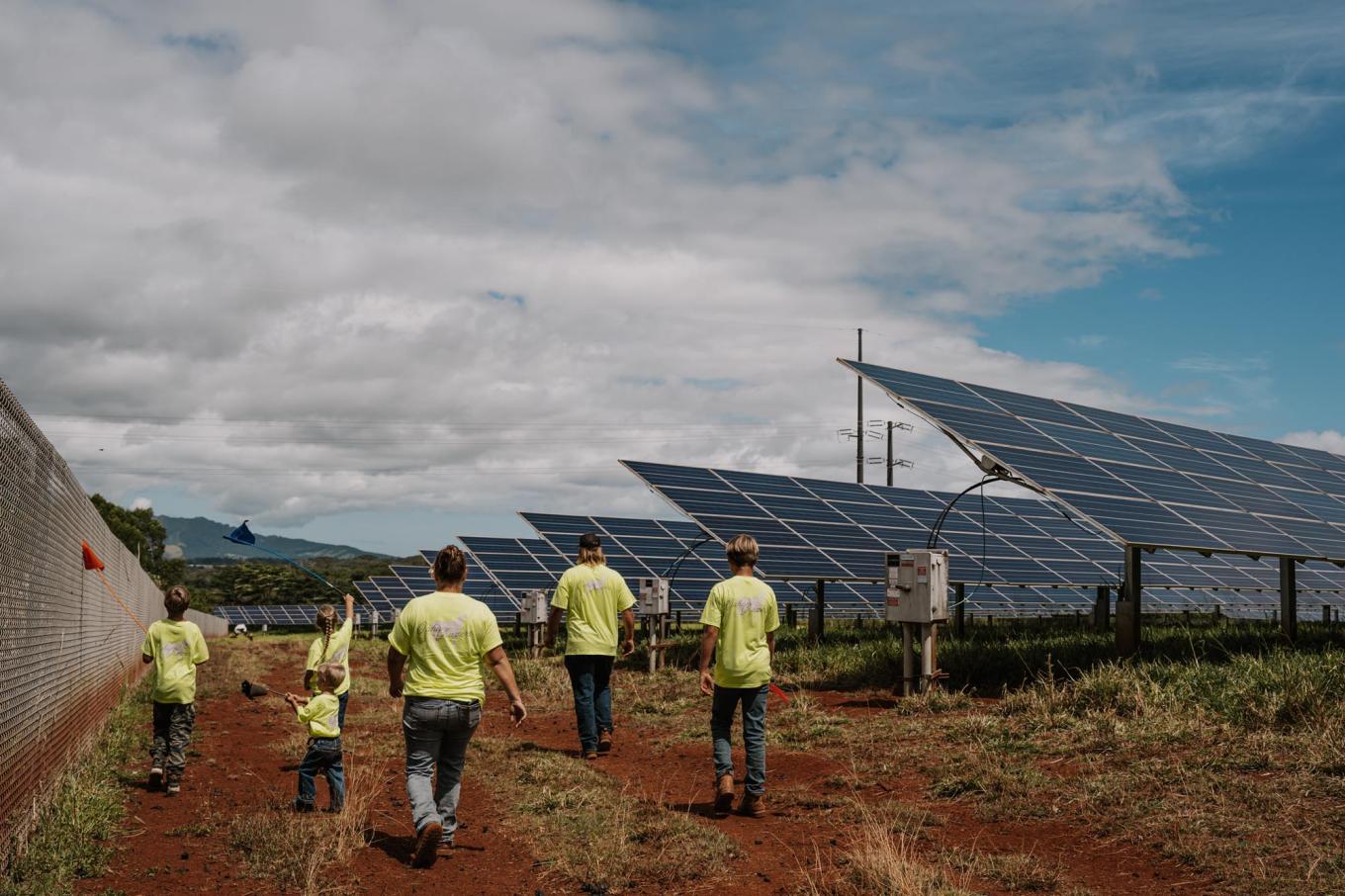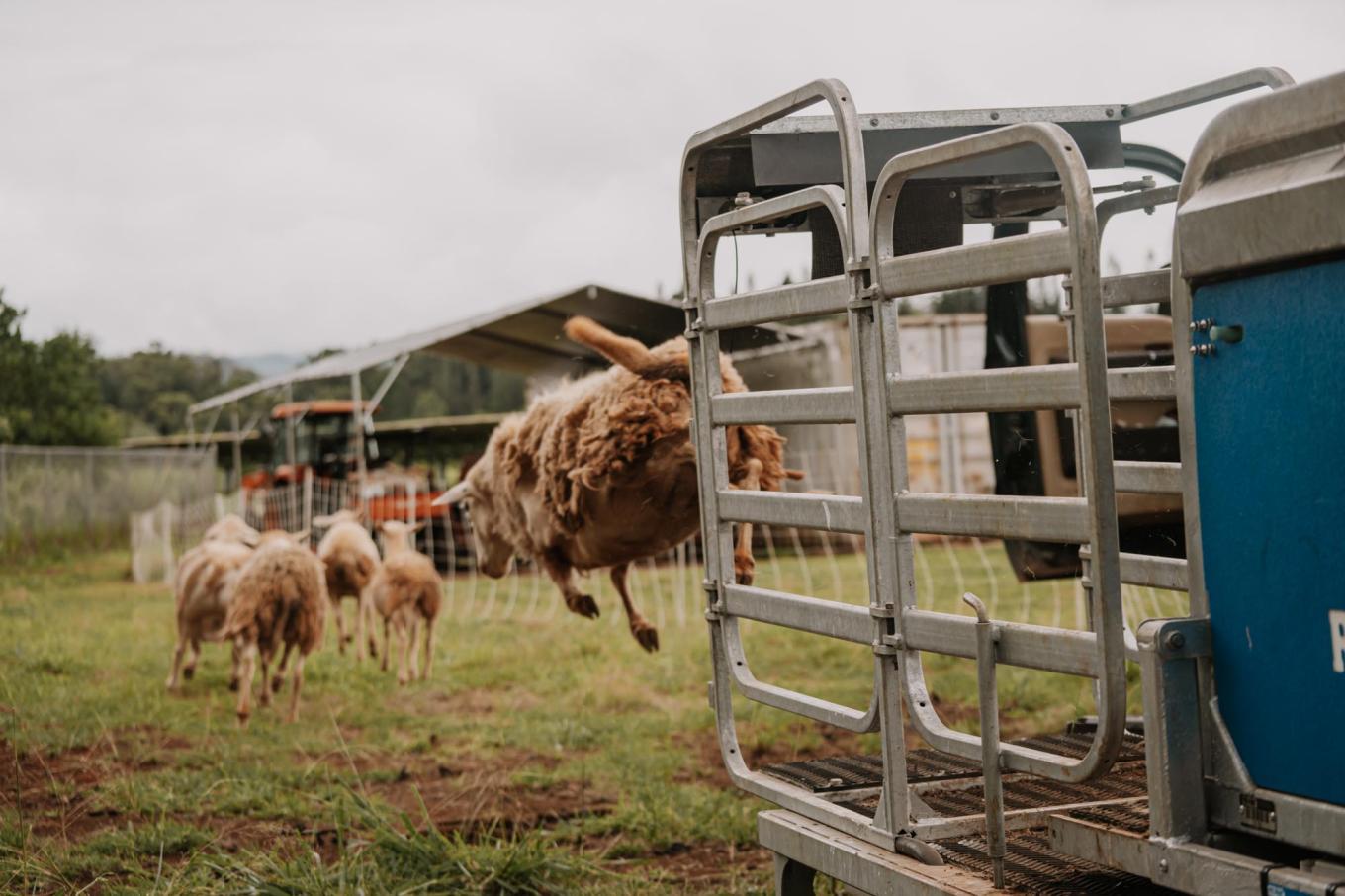
Raia Olsen
Oahu Grazers
Raia Olsen and her husband, Daniel, own and operate two livestock companies, Oahu Grazers, a solar sheep grazing operation, and Flying W Ranch, a cow-calf operation on the North Shore of Oahu. Raia and Daniel were both brought up in ranching and rodeo families but never planned on owning their own ranch until they were gifted 20 sheep in 2014. They took the opportunity to begin building their sheep flock and developing their solar projects. Their four young children are deeply involved in the farm.
EQIP
Hawaii

The Olsen’s manage a total of 3,300 acres, with about 700 acres dedicated to sheep grazing. The sheep at Oahu Grazers are used to manage vegetation under solar panels, helping maintain the land and meet agricultural practice requirements for solar sites. The grazing operation is tailored to the island’s unique climate zones, balancing wet and dry areas to optimize sheep health and vegetation control. The ranch also contributes to fire mitigation by using grazing to manage overgrown grasslands.

On the Big Island of Hawaii, they have all 13 USDA climate zones represented. On the island of Oahu where we are, there are super tall mountain cliffs and rainy areas where we graze our cattle and goats. Then we have drier areas where we run our sheep and solar projects. The two ecosystems are strikingly different but that makes it interesting.

The use of electric fencing to manage vegetation and reduce fire hazards is essential, particularly in areas where dry, dormant plant matter accumulates, creating a perfect fuel for fires. The traditional method of mowing only pushes the vegetation down, leaving it to dry out and create even more flammable material on the ground. Through an Environmental Quality Incentives Program (EQIP) grant, Raia was able to create cross fenced paddocks for 700 acres of pasture. By utilizing electric fences and concentrating sheep in targeted areas, livestock can effectively graze down the vegetation, reducing the fire fuel and promoting plant growth. Sheep are well-suited for this task because they graze without uprooting plants, which encourages deeper root systems that help retain moisture in the soil, leading to cooler ground temperatures and potentially preventing fires from spreading.

The grazing process also contributes to creating fire-resilient communities by establishing green breaks that can slow or stop the progression of a fire, giving firefighters better access and safer conditions. Livestock reduce ladder fuels—vegetation that can carry fire from the ground to the treetops—by clearing underbrush and keeping the ground free of dry plant litter. The livestock that the Olsen’s manage also fertilize the soil through their waste, contributing to a regenerative cycle that improves soil health and reduces the need for additional fire mitigation measures like mowing or spraying herbicides.

80% of the livestock raised in the state of Hawaii is shipped out live and then we ship in the same amount of meat back into the islands processed. Keeping as much of our animal processing here on island would be a huge improvement on our environmental impact.

Oahu has about two weeks worth of food on the island. To be that dependent on the mainland, is crazy to me when we have a year-round growing season. I think that we should be a lot more self-reliant and I know this is possible. The ancient Hawaiians did it for ages.
